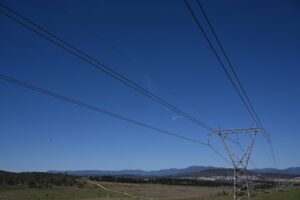Consumers in NSW stand to benefit – at least partially – from the merit order effect of green energy after the state government instructed the pricing regulator to change the way it calculates the wholesale energy price component of retail electricity bills.
It is often forgotten under the screaming headlines of rising electricity bills, that while retail prices have jumped sharply, wholesale energy prices (i.e. the cost paid for electricity produced from coal and gas-fired generators, and any renewables) have been at the lowest levels since the introduction of the National Electricity Market.
Little, if any, of those cost reductions have been passed on to retail customers. However, the NSW government has now adjusted the terms of reference under which IPART will determine regulated electricity tariffs to mass-market customers over the period from 2013-16.
The key change relates to the wholesale electricity cost component of the retail tariff. While previously the floor for wholesale electricity costs was set as the long-run marginal cost (LRMC) of generation, the floor price has now been set as a blend between LRMC (75 per cent weighting) and market-based prices (25 per cent weighting).
Market analysts estimate that market-based prices are trading around $20/MWh below the LRMC, mostly the result of falling demand, the reduction in the risk of high pricing events, and the incursion of green energy, particularly rooftop solar, at a retail level. (See graphs below).
The NSW decision follows a similar ruling in South Australia, where that state’s regulator suggested in a draft ruling that retail electricity prices could be cut by 8.1 per cent as a result of estimating the wholesale price component around the actual cost of energy (including long-term contracts and hedging), rather than the energy industry’s “best guess” estimates, which always fell on the high side – just like the network operators.
The wholesale cost falls have been driven by a combination of falling demand and the impact of renewable energy, which has been pushing down prices on the NEM because it has a very low short-term marginal cost, so it pushes higher-cost generators out of the market. That is the principle reason that the two biggest coal generators in South Australia have been closed, and why less gas-fired electricity has been used than anticipated elsewhere.
Falling demand, in turn, has been caused by a range of factors, including the rapid uptake of rooftop solar (reducing consumer demand), lower industrial use, and the impact of energy efficiency measures.
And it is still falling. According to an analysis of Australian Energy Market Operator data by the University of Melbourne’s Mike Sandiford, the average rate of demand across the national electricity market in the September quarter was 21.4GW, some 600MW below the same period last year and 8.5 per cent lower than its 2008 peak.
The difference between actual and forecast demand is nearly 15 per cent. In an industry that generally features high volumes and low margins, such a fall would have (and is having) a profound impact on incumbent generators.
Sandiford also provides these graphs, which highlight where this reduction in demand is being felt the most: Primarily during the heat of the midday sun, when solar PV is making the most of its contributions, and, curiously, also in the middle of the night. That’s because solar hot water has been replacing the off-peak electric hot water systems that created much of that 2am and 4am demand.
And in another interesting piece of analysis, Sandiford suggests that while wholesale prices have risen since the introduction of a $23 a tonne cost on carbon on July 1, generators in some states are benefiting because the rises have been out of proportion with the emissions intensity of their plant.
The rise in wholesale prices is being set by Victoria, which has the highest emissions intensity because of its Latrobe Valley brown coal-fired generators .
However, Sandiford believes that generators in South Australia, and to a lesser extent in NSW, are getting a windfall benefit because the price rises in Victoria are being transferred to their state thanks to the quirks of the NEM. South Australia nominally has the lowest emissions intensity (just over half a tonne), while NSW is slightly better.
He suggests that SA prices are $15/MWh above where they should be, and in NSW they are $5/MWh above where they should be.









